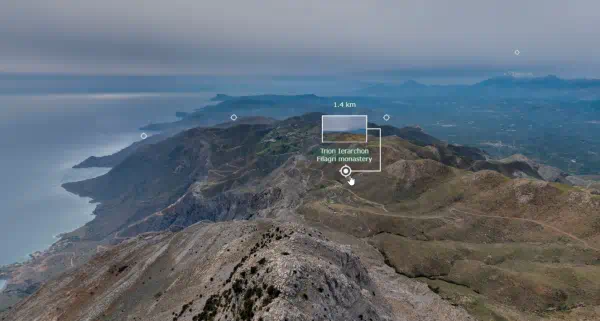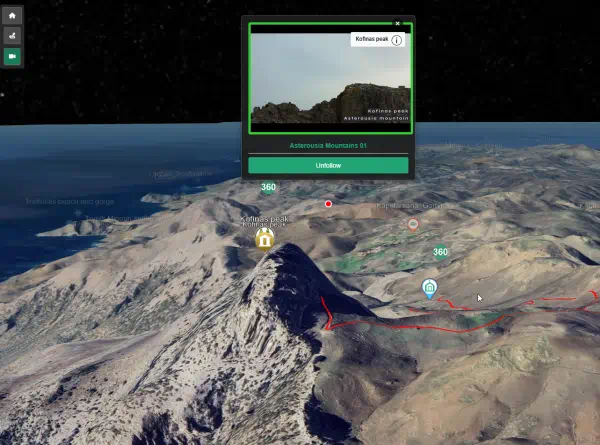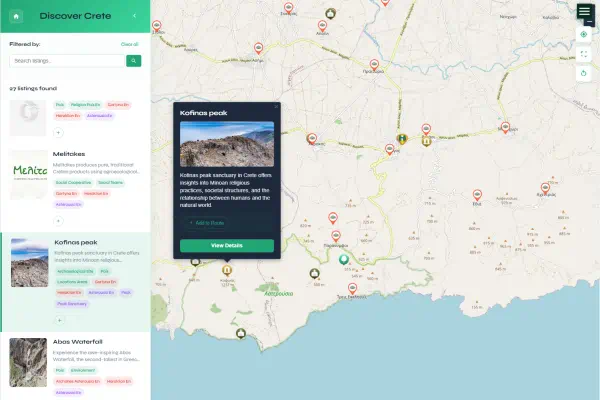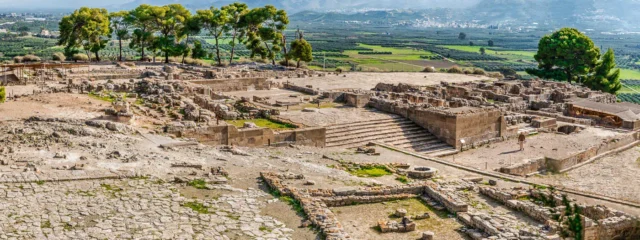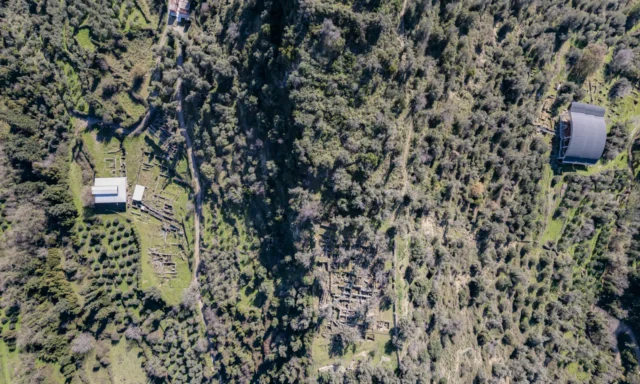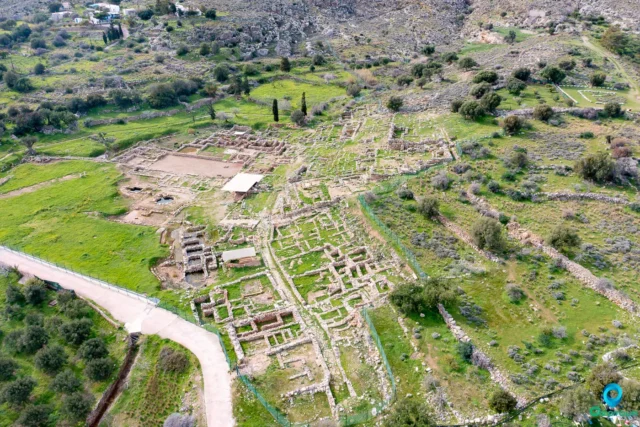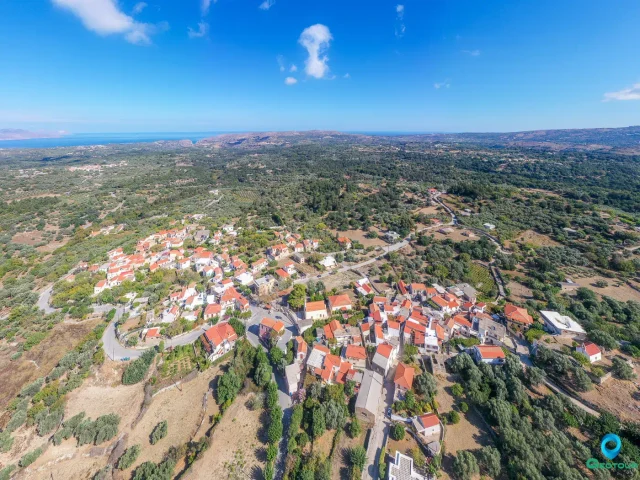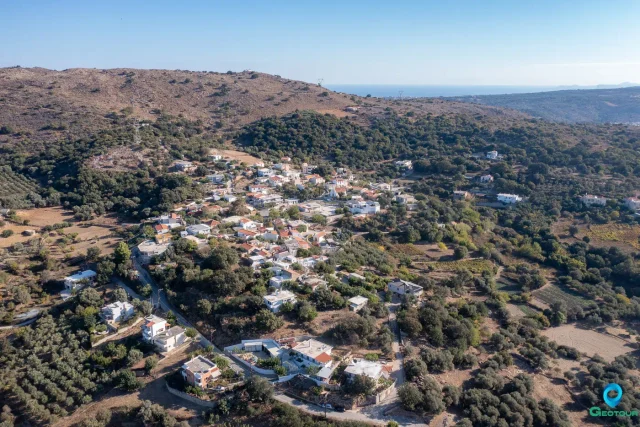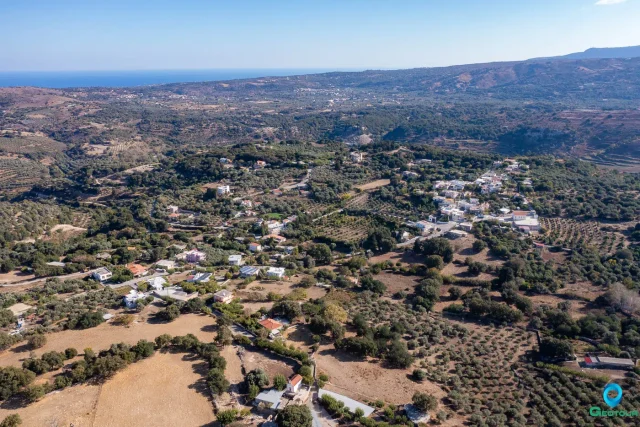The Phylaki Tholos Tomb: A Postpalatial Elite Burial in West Crete
The tholos tomb at Phylaki is a significant Late Bronze Age funerary monument located in the Apokoronas region, part of the broader Chania area of West Crete. Dating primarily to the Late Minoan III (LM III) period, the tomb is a key archaeological site for understanding the social dynamics, burial customs, and artistic production of Postpalatial Crete. It is particularly distinguished by its unusual rectangular chamber, specific architectural anomalies, and a rich collection of high-status grave goods, including notable ivory carvings and seals. Its excavation and study provide a window into a time of shifting power structures on the island following the decline of Knossos’s central authority.
Historical Periods
The tomb’s primary period of construction and use falls within the Final Palatial and Postpalatial periods (LM IIIA–IIIB). The artifacts recovered, particularly the collection of seals, indicate that the latest objects deposited date no later than LM IIIA1. This places the tomb’s activity squarely in the era following the collapse of Knossos’s administrative dominance (c. LM IIIA2), a time characterized by the emergence of powerful regional centers and local elites across Crete, especially in the west.
Key Historical Events
- Establishment: The tomb was likely established at the onset of the Final Palatial/Postpalatial period. Its monumental form is part of a broader trend in West Crete where local elites began to adopt impressive architectural styles for their burials to display power and status.
- Peak Period: The tomb’s main use corresponds to the LM IIIA–B periods. This was a time when elite groups in West Crete increasingly engaged in ostentatious display through both tomb architecture and the deposition of valuable, often imported or heirloom, grave goods.
- Status of Tomb: Prior to its modern archaeological excavation, the tomb was discovered to have been partly looted, and the grave goods within were found in a disturbed state. This has complicated the interpretation of the original burial arrangements and the association of specific artifacts with individual interments.
Archaeological Discoveries
Excavations
The site was excavated by the archaeologist Yiannis Tzedakis, with findings reported from 1981 onwards. The discoveries have been crucial for defining the character of elite burials in the Chania region during the Late Minoan III period.
Architectural Remains
The Phylaki tomb is a large, well-built tholos tomb, but it deviates from the typical circular chamber design in several important ways.
- Chamber Design: It features an unusual rectangular chamber, a design choice that is rare for tholos tombs in the Aegean.
- Entrance Detail: The tomb shares a highly distinctive architectural feature with the tholos at Malame, also in the Chania region. The lintel slab over the entrance, which faces the dromos (passageway), is set vertically on its end. This arrangement creates a prominent rectangular “plaque” over the doorway, serving as a unique architectural marker for these specific West Cretan tombs.
Notable Artifacts (Grave Goods)
Despite being partly looted, the tomb yielded a remarkable collection of high-status artifacts.
Ivory Carvings
The ivories from Phylaki are especially significant as they expand the known Cretan artistic repertory of the period with unique stylistic features.
- Footstool: Parts of a footstool were found, which had been inlaid with carved ivory plaques depicting figure-eight shields and warriors’ heads. This type of prestige furniture has parallels at other elite sites like Archanes and on the Greek mainland.
- Plaques and Figures: Finds include a plaque carved on both sides with a tenon at the bottom, likely for insertion into furniture or a scepter. It depicts two antithetic, kneeling male figures in an embracing pose. Additionally, parts of at least three other male figures carved in the round and several crudely carved plaques with standing sphinxes were recovered.
- Iconography: A defining stylistic trait of all the faces on the Phylaki ivories—from the warriors’ heads to the embracing figures—is the carving of the eye in relief as a solid almond shape, with no indication of a pupil.
Seals (Glyptic)
A collection of sixteen seals was recovered, providing insight into the status and connections of the tomb’s occupants.
- Materials: The assemblage is dominated by valuable hard stone seals, including two stunning rings made of breccia. This preference for hard stones contrasts with the more common soft-stone seals found at other sites.
- Heirlooms: A significant portion of the seals were antiques, or heirlooms, at the time of their deposition. Ten of the sixteen seals date to the LM I–II periods or earlier, long before the tomb’s primary use in LM IIIA-B.
- ‘Talismanic’ Seals: Among the heirlooms, six are carved in the distinctive ‘talismanic’ style of the Neopalatial period, suggesting these objects were curated and valued for generations.
Other Finds
The tomb also contained bronze grave goods, a common feature of high-status “warrior graves” of the period, and a curious schist block that may have been contemporary with the tomb’s use.
Cultural and Economic Context
Connections to Other Sites
The Phylaki tholos was not an isolated monument but was part of a network of elite interaction.
- Regional Link: Its strongest connection is to the Malame tholos in the Chania area, with which it shares the rare rectangular chamber and the unique vertical lintel plaque, suggesting a localized architectural tradition.
- Crete-wide and Mainland Links: The ivory footstool has direct parallels with finds from the elite cemetery at Archanes and from sites on the Greek mainland, indicating participation in a shared culture of elite display across the Aegean.
Cultural Practices
The tomb’s construction and contents reflect the cultural practices of the Postpalatial Cretan elite.
- Funerary Ritual: The adoption of the monumental tholos tomb, possibly inspired by Mycenaean mainland prototypes, demonstrates a shift in funerary ideology. The focus was on creating a lasting, highly visible monument.
- Elite Display: The deposition of rich and exotic grave goods—including fine ivories, bronze weaponry or vessels, and curated antique seals—was a key strategy for asserting social status and power in death.
Connections to Crete
Regional Significance
The Phylaki tholos is a prime example of the rise of regional power in West Crete following the collapse of Knossos’s central administration. The tomb’s monumentality and the wealth of its contents signify the emergence of a powerful local elite capable of commanding significant resources and participating in long-distance exchange networks. It demonstrates a clear pattern of ostentatious display in funerary practices that became characteristic of this region in the LM IIIA2–B periods.
Key Points Summary
- Location: Phylaki, in the Apokoronas region of Chania, West Crete.
- Dimensions: A large tholos tomb noted for its unusual rectangular chamber.
- Active Historical Periods: The tomb was used during the Final Palatial and Postpalatial periods (LM IIIA–IIIB).
- Historical Significance:
- It is a major example of monumental funerary architecture in Postpalatial West Crete, reflecting the rise of regional elites after the decline of Knossos.
- Its unique architectural features, especially the vertical lintel plaque, link it directly to the Malame tholos, suggesting a local building tradition.
- The tomb contained exceptionally rich grave goods, including finely carved ivories (a footstool, figures with almond-shaped eyes) and a collection of antique hard stone seals, highlighting the wealth, status, and curated possessions of the deceased.
- Current Status: The tomb was found to have been partly looted and its contents disturbed before modern archaeological excavation.
References
- Eleni Hatzaki, 2018. Visible and invisible death. Shifting patterns in the burial customs of Bronze Age Crete, in: Relaki, M., Papadatos, G., Branigan, K. (Eds.), From the Foundations to the Legacy of Minoan Archaeology: Studies in Honour of Professor Keith Branigan, Sheffield Studies in Aegean Archaeology. Presented at the Round Table on Aegean Archaeology, Oxbow Books, Oxford ; Philadelphia, pp. 190–209.
- Karetsou, A., Girella, L., 2015. The Seals from Kalochorafitis Tomb B, in: Kalochorafitis: two chambers tombs from the LM IIIA 2-B cemetery a contribution to postpalatial funerary practice in the Mesara, Studi di Archeologia Cretese. Bottega d’Erasmo A. Ausilio, Padova, pp. 257–276.
- Krzyszkowska, O., 2011. Seals and society in Late Bronze Age Crete. Presented at the Proceedings of the 10th International Cretological Congress, Philologikos Syllogos “O Chrysostomos,” Khania 2006, pp. 437–448.
- Rehak, P., Younger, J.G., 1998. Neopalatial, Final Palatial, and Postpalatial Crete. American Journal of Archaeology 102, 91–173. https://doi.org/10.2307/506138

